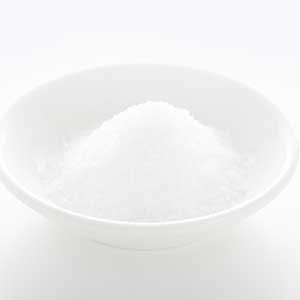
News
Aug . 06, 2024 12:56 Back to list
Innovative Techniques for Enhanced Production of Polyglutamic Acid in Biotechnology Applications
Polyglutamic Acid Production Techniques and Applications
Polyglutamic acid (PGA) is a naturally occurring biopolymer composed of repeating units of glutamic acid. It is a versatile polymer with unique properties that have garnered significant interest in various fields, including biotechnology, medicine, and agriculture. As researchers and industries continue to explore its potential, understanding the production methods and applications of polyglutamic acid becomes essential.
Production Techniques
Polyglutamic acid can be synthesized by both microbial fermentation and chemical methods. However, microbial fermentation is the most commonly employed technique due to its eco-friendliness and efficiency. The fermentation process typically involves specific strains of bacteria, such as *Bacillus subtilis*, which are capable of producing PGA through the fermentation of carbon sources like glucose or sucrose.
The production process begins with selecting and culturing the appropriate bacterial strain. Conditions such as pH, temperature, and nutrient availability are meticulously controlled to optimize PGA yield. For example, studies have shown that maintaining a pH between 6.5 and 7.5 and temperatures around 30-37°C can promote the best growth rates and PGA production in *Bacillus subtilis*. After the fermentation phase, the PGA is extracted using various purification techniques, such as precipitation and dialysis, to remove impurities and isolate the desired product.
Advancements in genetic engineering have opened new avenues for enhancing PGA production. By modifying the metabolic pathways of the producing organisms, researchers can improve the yield and efficiency of polyglutamic acid synthesis. This biotechnological approach not only increases production rates but also allows for the customization of PGA properties for specific applications.
polyglutamic acid production

Applications of Polyglutamic Acid
Polyglutamic acid is increasingly recognized for its wide range of applications across different industries. In agriculture, PGA is valued for its water retention capabilities, making it an effective soil conditioner. When added to soil, PGA can enhance the soil’s ability to hold moisture and nutrients, supporting plant growth and reducing the need for frequent irrigation. This property is particularly beneficial in arid and semi-arid regions, ultimately contributing to sustainable farming practices.
In the pharmaceutical and biotechnology sectors, polyglutamic acid has demonstrated potential as a drug delivery system. Its biocompatibility and biodegradability make it an ideal candidate for transporting therapeutic agents within the body. Research is ongoing to explore its ability to encapsulate enzymes, proteins, and even gene therapy vectors, aiming to improve the efficacy of treatments while minimizing side effects.
Moreover, PGA functions as a thickening agent and emulsifier in the food industry, contributing to the texture and stability of various food products. Its use as a food additive aligns with the growing consumer demand for natural and sustainable ingredients, as it enhances the quality of food products without synthetic chemicals.
Conclusion
The production of polyglutamic acid, primarily through microbial fermentation, promises significant benefits across diverse applications, from agriculture and pharmaceuticals to the food industry. With advancements in biotechnology and genetic engineering, the efficiency and yield of PGA production are set to improve. As industries increasingly seek sustainable and effective solutions, the role of polyglutamic acid is likely to expand, offering innovative approaches to tackling contemporary challenges. The exploration of its multiple applications ensures that polyglutamic acid will remain a focal point of research and development for years to come.
-
Polyaspartic Acid Salts in Agricultural Fertilizers: A Sustainable Solution
NewsJul.21,2025
-
OEM Chelating Agent Preservative Supplier & Manufacturer High-Quality Customized Solutions
NewsJul.08,2025
-
OEM Potassium Chelating Agent Manufacturer - Custom Potassium Oxalate & Citrate Solutions
NewsJul.08,2025
-
OEM Pentasodium DTPA Chelating Agent Supplier & Manufacturer High Purity & Cost-Effective Solutions
NewsJul.08,2025
-
High-Efficiency Chelated Trace Elements Fertilizer Bulk Supplier & Manufacturer Quotes
NewsJul.07,2025
-
High Quality K Formation for a Chelating Agent – Reliable Manufacturer & Supplier
NewsJul.07,2025
